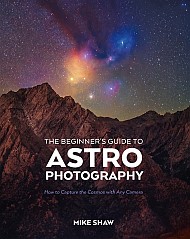Astronomy
Why Ozempic and Wegovy Don’t Cause Weight Loss for Everyone
Scientists look to genetics to explain why GLP-1 drugs work for some people but not for others
Why zero is the most important number in all of mathematics
Why zero is the most important number in all of mathematics
Factors to Consider in Picking a School For Your Child
I’m an education researcher and a parent. Here are some factors to consider in picking the best possible school for your child
How Archaeology Is Reviving the Smell of History
How can reconstructing long-lost smells of ancient artifacts help us connect with the past?
Mosquitoes Found in Iceland for the First Time amid Climate Change
Bird flu surges and a government shutdown collide, complicating efforts to track cases and protect flocks.
The Quest for Corrosion Proof Satellites
Satellites orbiting Earth face a constant assault from highly reactive single atom of oxygen which are created when solar radiation splits oxygen molecules in the upper atmosphere. These atoms don't just create drag that pulls spacecraft back to Earth, they also bind to satellite surfaces, causing corrosion that limits most satellites to roughly five year lifespans. A team of engineers at the University of Texas at Dallas have been developing a protective coating using techniques borrowed from microelectronics and optical manufacturing to counter the effects. The process the team have developed enables satellites to withstand conditions even harsher than those found in space. If successful, this coating could not only extend satellite lifetimes but enable spacecraft to operate in very low Earth orbit, a region currently too hostile for most missions.
A Fibre Optic Breakthrough Reveals the Universe in Sharper Detail
Astronomers have discovered a clever way to make a single telescope capture sharper details than should be physically possible. The technique involves feeding starlight through a special optical fibre called a photonic lantern. Anyone else thinking of a certain glowing green lantern from a movie? Alas not, instead of special powers, it splits light according to its spatial patterns like separating a musical chords into individual notes. The researchers achieved resolution that has never been achieved before without linking multiple telescopes together. When they tested the technique on a star 162 light-years away, they not only proved it works but stumbled upon an unexpected discovery, that the star's surrounding gas disc is mysteriously lopsided.
The Tycho Supernova's Hidden Secret
The famous Tycho supernova of 1572, witnessed by Danish astronomer Tycho Brahe, didn't explode in empty space as has been assumed. New analysis reveals it detonated inside a planetary nebula, the ghostly shell of gas expelled by an earlier dying star. The evidence lies in two "ear" shaped structures that were sticking out from the remnant's main shell, matching similar features in three other supernovae previously identified as explosions within planetary nebulae. This discovery supports the "core-degenerate" model where a white dwarf star merges with a companion star's core, with the explosion occurring hundreds of thousands of years later while the nebula remains intact. Most strikingly, if Tycho follows this pattern, it suggests that 70-90% of normal Type Ia supernovae may actually be supernovae inside planetary nebulae!
Galactic Empires May Live at the Center of our Galaxy, Hence Why We Don't Hear from Them
In a recent paper, a team of researchers proposes how humanity may someday relocate its entire civilization near the center of our galaxy to take advantage of the relativistic effects of the supermassive black hole there. They also indicate how other advanced civilizations could have done so already.
AI Learns to Identify Exploding Stars with Just 15 Examples
How can artificial intelligence (AI) help astronomers identify celestial objects in the night sky? This is what a recent study published in Nature Astronomy hopes to address as an international team of researchers investigated the potential for using AI to conduct astrophysical surveys of celestial events, including black holes consuming stars or even exploding stars themselves. This study has the potential to help astronomers use AI to enhance the field by reducing time and resources that have traditionally been used to scan the night sky.
Live Earth From Space Video from the International Space Station ( From The NASA ISS Live Stream)
China's Zhuque-3 Reusable Rocket Passes Key Milestone
On Monday, Chinese company LandSpace executed a static-fire test with its 217-foot-tall Zhuque-3, a reusable rocket that China hopes will rival SpaceX. The rocket is on the way to its inaugural test flight expected at some point later this year.
This New Super Earth May Have Liquid Water And It's In Our Neighbourhood
Astronomers have found a new super-Earth only about 20 light years away. At that distance, it's a candidate for direct imaging.
Ancient DNA Reveals New Diseases behind Napoleon’s 1812 Russian Retreat
Disease-causing bacteria that have been recently discovered in the teeth of Napoleonic soldiers may have spurred the massive infantry’s demise during its retreat from Russia
XRISM Catches a Pulsar’s Cosmic Wind...and Sees a Surprising Result
The Universe is a strange place. The X-Ray Imaging and Spectroscopy Mission (XRISM) orbiting observatory recently highlighted this fact, when it was turned on a pulsar to document its powerful cosmic winds. The discovery comes courtesy of ESA’s Resolve instrument, a soft X-ray spectrometer aboard XRISM. The study looked at neutron star GX 13+1. This is a strong X-ray source located in the constellation Sagittarius, very near the galactic plane towards the core of our galaxy. GX 13+1 is about 23,000 light-years distant.
Week in images: 20-24 October 2025
Week in images: 20-24 October 2025
Discover our week through the lens
FDA Warns People Not to Eat Recalled Eggs Contaminated with Salmonella
This is the third Salmonella-related egg recall of 2025. Here’s what to do if you have recalled eggs


